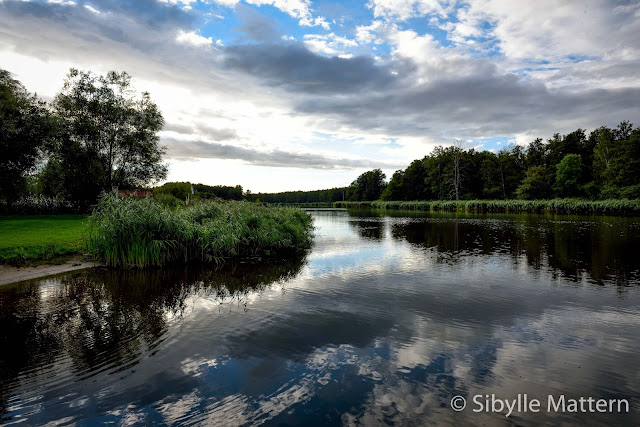Beelitz is the first and foremost "lost place" destination for photographers in search of the unusual. The discovery of this location was possibly the kickoff for the hunt for lost and abandoned places that have been covered by travel books and guides for photographers, workshops and ghost tours in recent years.
This old institution was built as a hospital and sanatorium for tuberculosis patients at the turn of the 19th century. Over 60 buildings of the same architectural style occupy an area of nearly 2 square kilometers: a women's hospital and sanatorium and a men's hospital and sanatorium, all separated by roads and parks to avoid contagion. In 1945 the roof of the Frauenklinik burnt, collapsed and the building was abandoned. Other parts were occupied until 1994; the Soviet army maintained a military hospital here. One of the last visitors was Erich Honecker who hid here some time in 1990 when the heat was on, before he escaped to Moscow in 1991.
Myriads of pictures have been published and many films shot. Polanski's "Pianist" and the film "Valkyrie" with Tom Cruise made use of this place.
I am adding a few pictures, all taken from the outside, some through windows and openings.
The buildings can nowadays only be entered when booked for registered tours and photography workshops. But I am loathe ... I still have not taken part in a photography workshop. I abhor the idea that someone should tell me where to put my tripod, what settings to use, when to press the shutter release... It seems to strip photography of the most pleasing and rewarding aspect, to see something unusual, to fix a moment in time, to have a personal history with the resulting image. But I have to admit, workshop photos mostly come out quite perfect; for someone who wants to produce perfect single images, or who enters competitions, it may be a good thing. Furthermore they are a good opportunity for professional photographers to earn money with teaching, if they have proprietary access to good locations, have done diligent location scouting, checking out the perfect light etc. and have some pedagogical skills. I have to try it out some time, maybe when I retire - if ever I should retire - and when my family does not want to tag along anymore...
over at the men's sanatorium:
The "Frauenklinik Beelitz" (women's hospital) has undergone a development last year, when a "Baumkronenpfad" ( a treetop-level path) was constructed in 23 m height. At first, I thought it an odd concept to preserve these ruins in their state of disrepair and offer a glimpse from above instead of developing these beautiful buildings into something more useful, apartments, hospitals, offices, studios, cultural venues... but Beelitz is so far out of Berlin and is competing with so many other beautiful old ruins closer to the capital that it seems not economical for the time being. And having walked the path I find the roof-top view quite intriguing. Forests have grown on the top floor in the past decades with no soil other than what trees and shrubs produced themselves, through wind and fallen leaves. Pioneering birches climb out of empty windows, pine trees and spruce grow in the crevices and drain pipes of the old roofs, while the roots find their ways across the fassades. It seems this is a new Angkor Wat in the making.
a new interpretation of rooftop gardening ...
I had taken one other tree top walk before, in Singapore's Gardens by the Bay. There, the colourful illumination and the view of the bay with its utterly new and modern buildings in the "here-and-now" are the attractions. Here in Beelitz the view is more introspective, into the past and an era that has left some beautiful ruins but is otherwise better not retrieved.
In-camera double exposures to add a little "shaky camera" effect for horror ...
Come in!
























































